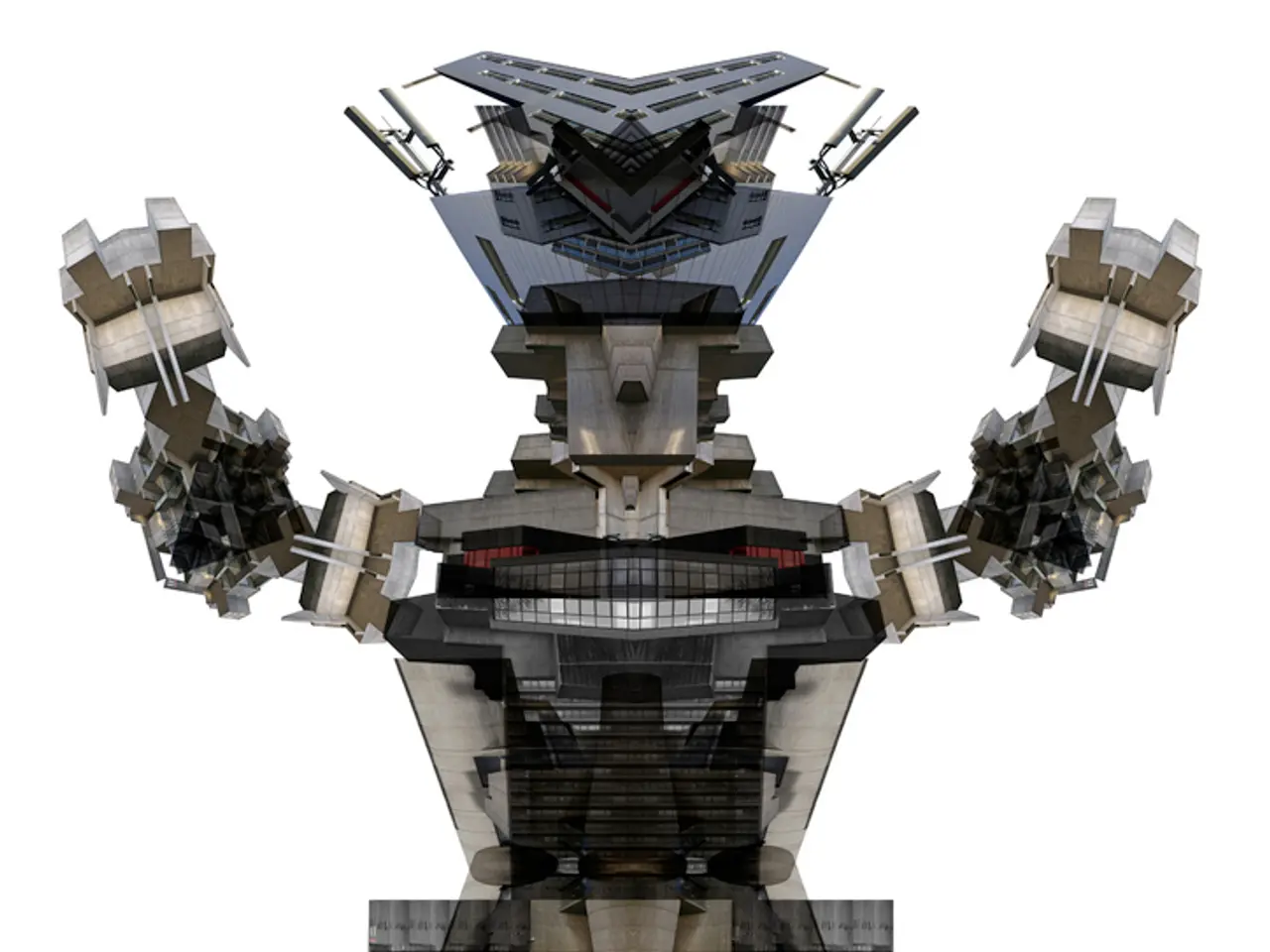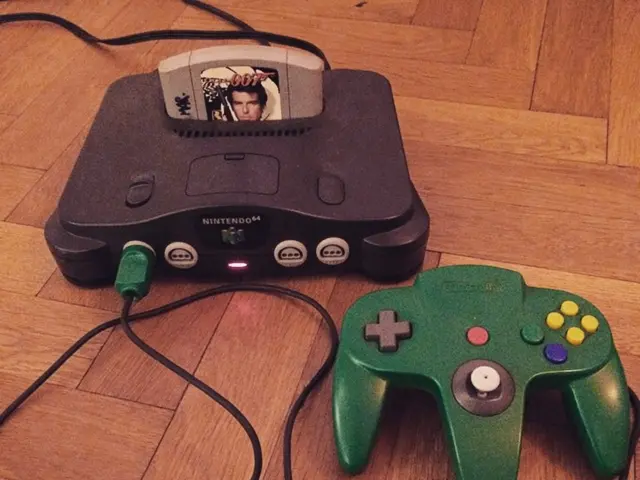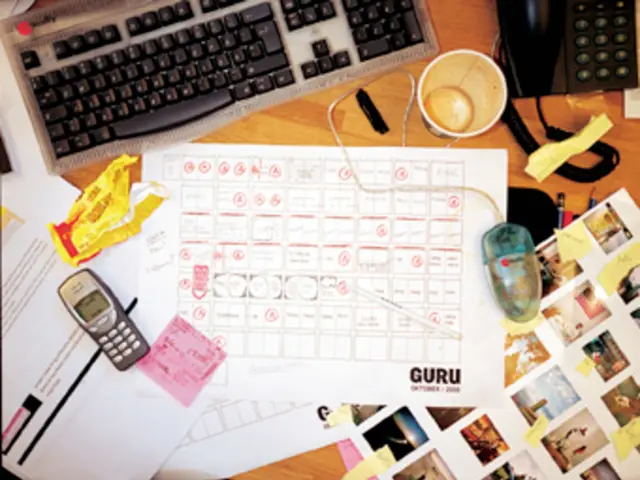Exploring Mars-like landscapes becomes a reality as German robotics unveil Bert and Spot
In a groundbreaking collaboration, the German Aerospace Center (DLR), Boston Dynamics, and international partners have developed two robots—Bert and Spot—designed to explore Mars-like terrains with integrated artificial intelligence (AI) and teamwork capabilities. These robots, a dynamic duo reminiscent of a robotic dog and a wheeled rover, are set to revolutionize planetary exploration.
Meet Bert and Spot: The Agile Explorers
Built by Boston Dynamics, Spot features agile legs that enable it to traverse steep slopes, caves, and rough terrain inaccessible to wheeled vehicles. Equipped with AI, Spot can navigate autonomously, correct errors, and perform manipulation tasks such as finding and handling sample containers.
On the other hand, Bert, developed by DLR, is a wheeled robot designed for carrying heavier loads, such as scientific equipment and collected samples, and analysing data relayed by Spot.
A Perfect Partnership
These robots leverage complementary mobility: Spot explores difficult terrain while Bert covers larger ground, carrying equipment and preparing for subsequent expedition steps. Spot can scout risky areas and send data back to Bert, which uses its processing capabilities to plan the next moves within the mission.
Their collaboration is underpinned by AI for autonomous decision-making. The robots recognise and adapt to errors (for example, Spot adjusting its grip on containers) and work as a coordinated team to complete complex exploration tasks more efficiently than a single robot could.
Preparing for the Red Planet
The ultimate goal of this collaboration is to achieve semi-independent operation and seamless human-robot collaboration, an essential capability for missions to Mars where communication delays require robots to act autonomously while still being directed by astronauts or operators remotely, such as from the International Space Station (ISS).
This collaboration has been tested through the Surface Avatar project, where astronauts like NASA’s Jonny Kim remotely commanded Bert, Spot, and other robots to perform coordinated sample collection and transport tasks in Mars-like conditions. The project demonstrated that minimal astronaut training can suffice to command multi-robot teams effectively in real time despite the inherent challenges of space environments.
Unveiling the Secrets of the Red Planet
Bert and Spot have practiced searching for signs of life, identifying geologically interesting features, and collecting samples during their tests. These trailblazers for the next generation of space exploration show the potential of the partnership between humans and robots in unlocking the mysteries of the Red Planet.
By training these robots on Earth, engineers are preparing them for the unpredictable conditions on Mars, where autonomous decision-making is essential. The robots, Bert and Spot, are designed to tackle challenges on rugged, rocky terrain similar to what future Mars missions might encounter.
The Future of Space Exploration
As development continues, it's envisioned that robotic teams like Bert and Spot will be the first to scout new frontiers on Mars, paving the way for human explorers. Working together, Bert and Spot can cover more ground and handle more complex assignments than a single robot.
The primary mission of Bert and Spot is to develop reliable systems for searching for signs of past or present life on Mars. This setup simulates how astronauts in orbit around Mars could oversee robotic explorers on the surface, combining human decision-making with the endurance and precision of robots.
A Leap Forward in Space Exploration
The ability of Bert and Spot to work semi-independently and cooperate with humans is a significant advancement in space exploration. The robots, Bert and Spot, are equipped with cameras, sensors, and advanced software for autonomous navigation, obstacle avoidance, and scientific task execution.
The collaboration between DLR, Boston Dynamics, and international partners demonstrates the potential of combining artificial intelligence, robotics, and human expertise for space exploration. The dynamic robotic duo, Bert and Spot, were tested in the rocky, volcanic landscape of Mount Etna in Sicily, Italy, which is considered an excellent stand-in for the Martian surface.
[1] [Article 1] [2] [Article 2] [3] [Article 3]
- As semi-independent explorers on Mars, Bert and Spot have leveraged their unique mobility and advanced software for autonomous navigation, obstacle avoidance, and geological sample collection, part of the crucial development in the partnership between artificial intelligence, robotics, and human expertise.
- The superior teamwork of Bert, with its cargo-carrying capacity and data analysis capabilities, and Spot, with its traversal abilities on rugged terrains, has set a new standard for efficient and coordinated exploration of inhospitable environments, such as Mars, pioneering the generation of human-robot collaboration in space exploration.
- Future space missions to Mars will profit from the advancements brought about by robotic teams like Bert and Spot, as they collect geological samples, search for signs of life, and explore the planet's surface, effectively extending human capabilities in the pursuit of scientific discovery and exploration.




